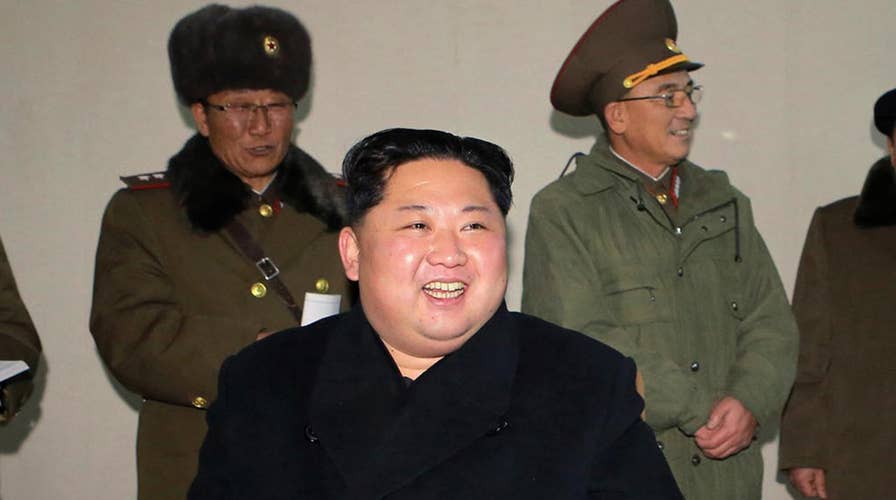Tensions with North Korea in focus after missile test
Former USS Cole Commander Kirk Lippold weighs in on 'Cost of Freedom.'
The advanced intercontinental ballistic missile unveiled by North Korea last week is capable of reaching any major U.S. city -- and may be able to disguise itself en route to its final destination.
The Hwasong-15 rocket could be equipped to carry decoys in a bid to evade U.S. missile interceptors such as the Terminal High Altitude Area Defense system, Michael Elleman, the senior fellow for missile defense at International Institute for Strategic Studies, told Fox News.
“One of the unfortunate implication of the recent test, because it is so much larger in size, it also has the capacity to carry decoys that would further confuse our missile defense. It increases the probability that it could evade THAAD,” Elleman said. “Whether if North Korea has tested decoys or countermeasures [is unclear] — but it has throw-weight to carry simple decoys."
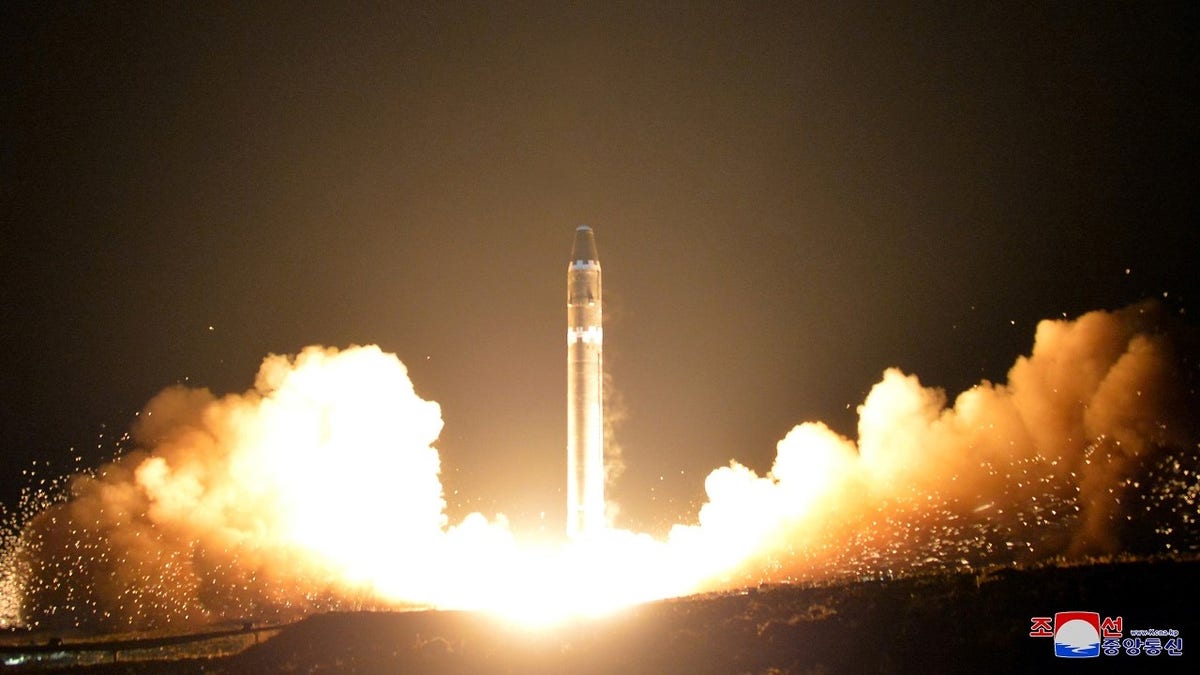
North Korea released photos of the Hwasong-15 ICBM that showed it was much bigger than its predecessor. (KCNA via Reuters)
The decoys could be as simple as Mylar balloons that could trick the system’s radars as the ICBM flies straight toward the U.S., Kingston Reif, from the Arms Control Association, told NPR.
The Hermit Kingdom released photos of the Hwasong-15, which it dubbed the “greatest ICBM,” a day after Wednesday’s stunning middle-of-the-night launch. Photos revealed the rocket was a significant improvement from its predecessor, the Hwasong-14, launched in July.
“The photographs from North Korea tells a number of things. First and foremost, it informs us that this wasn’t a modified version of the Hwasong-14. It's a completely new missile,” Elleman said.
WHAT WOULD HAPPEN IF NORTH KOREA FIRES A MISSILE AT THE US
He added the photos revealed a new mechanism for steering the missile's first stage, which could be a significant innovation.
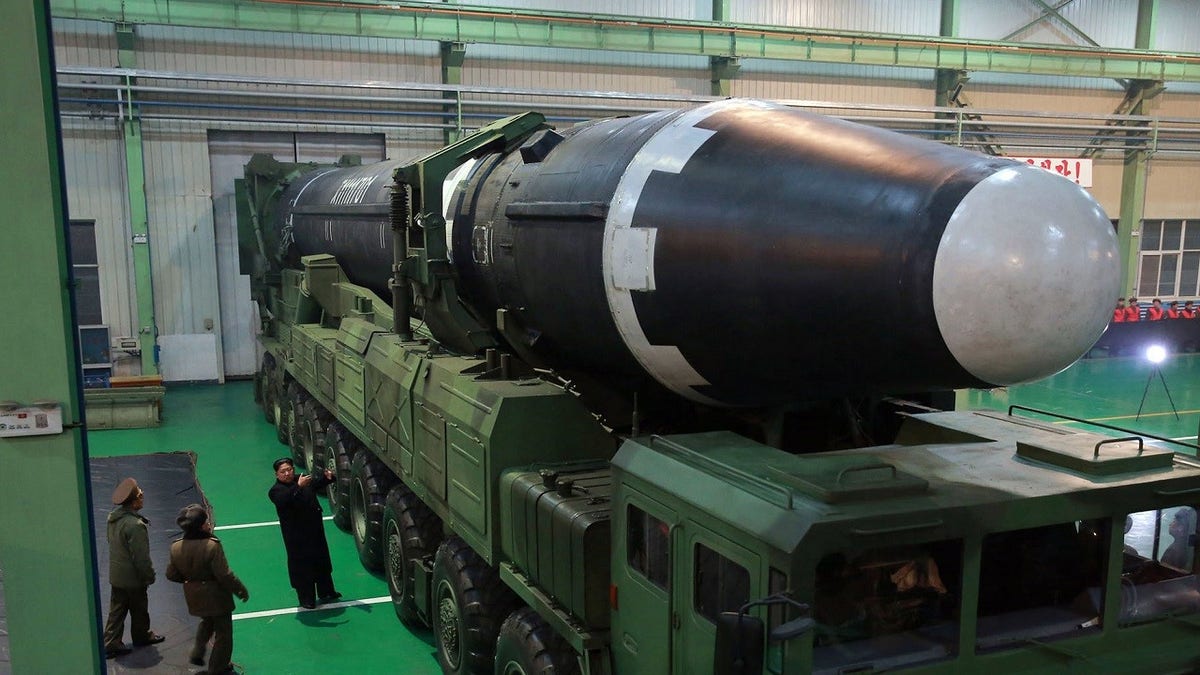
Kim Jong Un was pictured analyzing North Korea's new ICBM before last week's launch. (KCNA via KNS)
“In short, it eliminates the amount of things that could go wrong,” Elleman said. “It assures greater reliability.”
Meanwhile, the missile’s size gives it twice the thrust capability and allows it to carry a payload — a warhead or any system strapped on a missile — weighing at least 2,204 pounds, according to Elleman.
“North Korea can certainly make a warhead small enough to fall [between 1,543 pounds and 2,204 pounds],” he said. “This missile has the capability to hit anywhere in the U.S. in principle.”
FLIGHT CREW WITNESSED NORTH KOREAN NUCLEAR MISSILE TEST, AIRLINE SAYS
North Korea’s claim it now has the capability of placing a “super-large nuclear warhead” on an ICBM that’s capable of reaching American soil has reportedly prompted the U.S. to deploy THAAD anti-ballistic missile systems along the West Coast, Reuters reported Saturday, citing congressmen Mike Rogers, R-Ala., and Adam Smith, D-Wash.
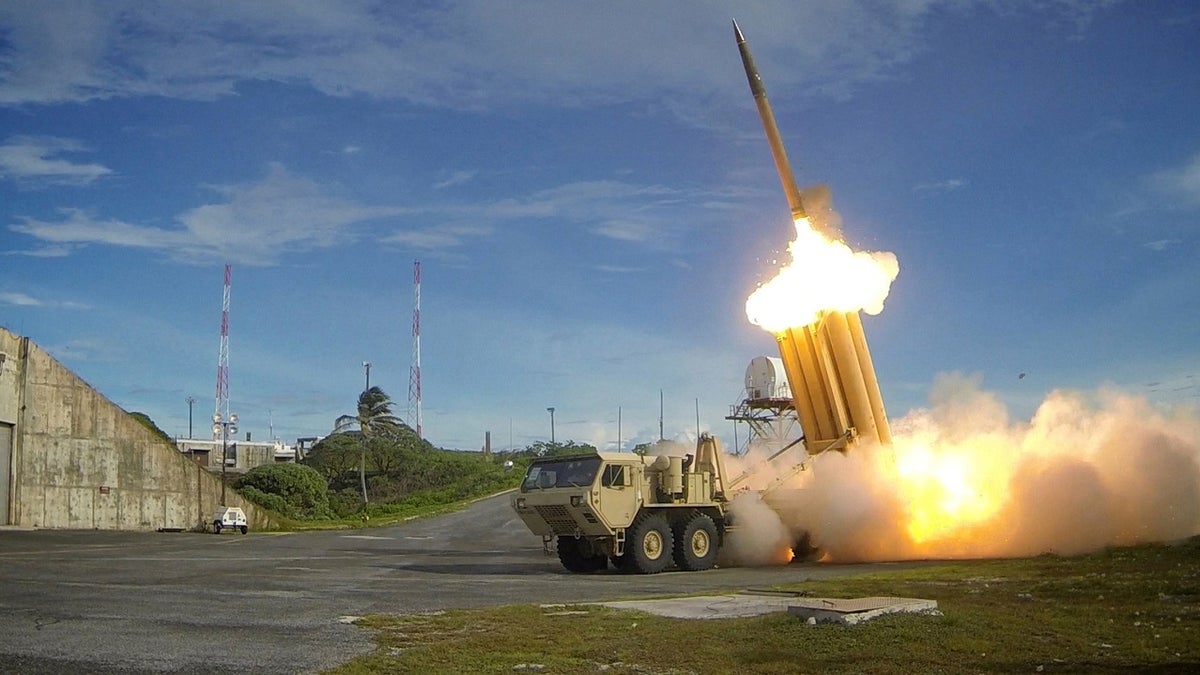
The THAAD anti-ballistic missile defense system was transported to South Korea as a defense against North Korea's ICBMs. (Reuters)
The Pentagon told Fox News in a Monday statement: “We have no additional information to provide.”
Though it appears Kim’s rocket scientists have made huge strides in the regime’s missile program, there are still likely more tests coming in the near future. Wednesday’s launch did not survive re-entry into the Earth’s atmosphere — a feat North Korea is working to perfect, a U.S. official told Fox News.
As for when the next missile launch will take place, it could be weeks or months, Elleman said, depending on if Kim wants to instigate the U.S. or collect data.
“The fact that this was successful means that they can do a test on a normal trajectory sooner. They can do it in a matter of weeks or they can wait a certain amount of time…based on how much data they need,” Elleman said.
Fox News’ Lucas Tomlinson contributed to this report.
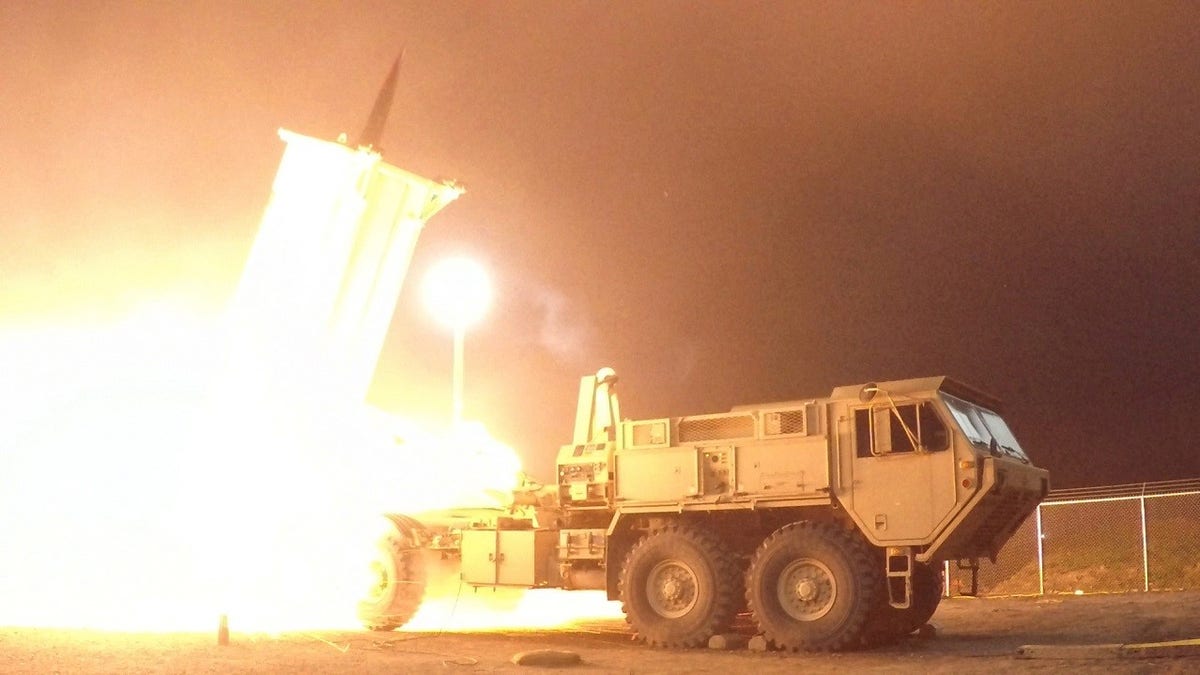
A THAAD interceptor is launched from the Pacific Spaceport Complex Alaska. (Reuters)
